

|
A Bookseller's Guide to Dorothy LyonsYou may recall a recent BookThinker article featuring a relatively obscure 20th-century author of young adult fiction who has become highly (though not broadly) collectible in recent years - (Clara) Dean Marshall. Marshall wrote only 6 novels, the last published in 1951, and, were it not for a small but enthusiastic following, she would likely be all but forgotten today. The same could be said for a contemporary of Marshall's, another author of young adult novels I suspect many of you have never heard of - Dorothy Lyons.
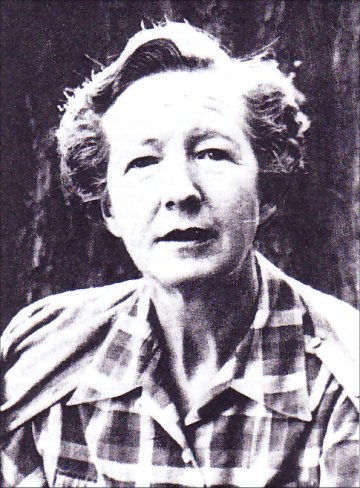
Lyons produced twice as many novels as Marshall, many of them brisk sellers in their day, but you'd never know it by Googling her. Good luck, in fact, finding any biographical information about her, let alone a website devoted to her work. Again, Lyons' legacy is kept alive, barely, by a small but enthusiastic following, members of which sometimes kick her books into three figures on eBay. Booksellers take note. BookThink's research department, headed by master librarian Pamela Palmer, was able to uncover at least something about Lyons. Born in Fenton, Michigan in 1907, she snagged a Bachelor's degree from the University of Michigan in 1929 then pursued a lengthy secretarial career. She completed her first book, Silver Birch, while secretary of the American Red Cross in Hawaii and had the unsettling privilege of witnessing the attack on Pearl Harbor. More books followed during the 40s and 50s, though she never became what she had originally intended to be - a full-time writer supplying the young reading public with what she perceived to be a dearth of horse stories. Lyons' first love was indeed horses, and she wrote about them passionately in all 12 of her books. Her formula was short and sweet: "Girl wants horse, girl gets horse, girl loses horse or other important consideration, all turns out well." In her autobiography, The Devil Made the Small Town, she jauntily proffers her "Capsule Course in Fiction Writing": "First, get a plot, a good one with problems and conflict - not just straight narrative. Then flesh it out with characters, either good, believable people or bad, believable people or both. Put them in suitable surroundings where they are at home and which are plot/suitable. Conversation, of course, everywhere. Whenever possible add to realism by drafting the five senses: even in moments of highest drama 'she heard a distant dog barking' or 'the smell of new leather would always carry him back ..." etc. Mix thoroughly, letting the characters live their own lives without any real or evident manipulation from you, carrying them toward a seemingly inevitable conclusion. "BUT then you inject an 'all is lost!' The main character's hopes of ever achieving his/her most cherished objective are dashed to pieces and there can be no hope of winning through until by his/her own efforts or cleverness the catastrophe is reversed, the good guys come out on top and the bad guys get their comeuppance." [EDITOR'S NOTE: Though this book is a modest 1983 trade paperback 140 pages in length, expect to pay well into three figures for the privilege of owning it. It's devilishly hard to find!]
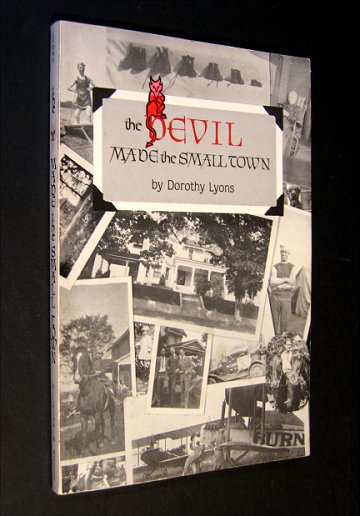
Her work habits are detailed in Something About the Author: Facts and Pictures About Contemporary Authors and Illustrators of Books for Young People: "I write on a typewriter for the first draft, having earlier concocted a story line which I have chaptered into half-size typing pages whether it contains only one line for a sequence I have clearly in mind or many lines if I'm grasping for ideas. When I start a day, I open up to wherever I am in the chapter outline and begin; then if I get a good idea for a chapter farther on I just leaf to that sheet and jot it down. Books are finished by laying one page on top of another whether you are 'inspired' or not and it works better on the whole if some kind of schedule is kept to. Doesn't sound very romantic, does it? But that's a head-of-a-pin version." As you might suspect, Lyon's stories toed a moral line, but it wasn't by design. She explains in Contemporary Authors: "To a woman who asked what moral precept I had included in a book, I replied, 'I write books to be enjoyed, books I hope the young ones will read and hate to put down, books they will want to read over and over.' I do try to include 'growing things' such as warning a girl never to sign a paper she has not read, or a big word here and there to stretch the vocabulary, and, I suppose, moral (ugh!) precepts by implication." Lyons most certainly succeeded in producing books that readers wanted to read over and over, and today's prices reflect this. Also contributing to the cause was noted illustrator Wesley Dennis. You may recognize Dennis as the frequent illustrator of another, much better known horse story author, Marguerite Henry. Dennis illustrated the dust jackets and frontises of 11 of Lyons' 12 novels - and no doubt would've illustrated the last if he'd lived to see it. Most of her titles also included additional internal Dennis illustrations.
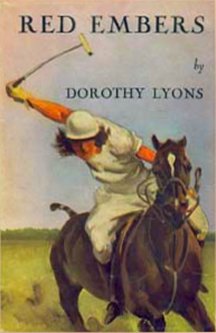
Lyons was loyal to her publisher, Harcourt Brace & Co., throughout her career. All first appearances of her books bear the Harcourt imprint and are necessarily more desirable than other imprints (with the possible exception of foreign translations). First edition identification couldn't be easier. If the statement "First Edition" appears on the title page verso, you have a first edition; if it doesn't, you don't. In most cases, later printings are indicated, but not always. Beware of sellers who assert that copies are first editions if no other printings are indicated. First state dust jackets, if a list of titles is present, should list to self - that is, the title should appear first in any list.
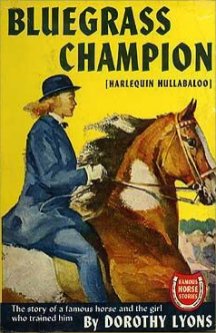
It should come as no surprise that Lyons' collectors do not necessarily salivate over first editions. This conforms to a familiar pattern with collectors of vintage young adult fiction. What's primarily sought after is a replication of an original encounter with the book, which means that early printings will do fine, and, in the absence of non-ex-library copies, ex-library copies will as well. What does matter - and hugely - are dust jackets. A nice dust jacket will trump first edition status every time and often lift any of Lyon's titles into three figures, or nearly so. Still, it's a good idea to market on the basis of edition state because collectors will still prefer them over later printings.
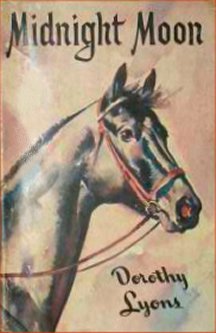
Rule of thumb: Buy any first edition or early Harcourt printing of any Lyon's title in copies, especially if they possess dust jackets. Lyons' first book, Silver Birch, and later books (#6-#10, specifically, with the exception of Pedigree Unknown) will generally command better prices than earlier books, but all should do well. Early softcover reprints won't be worth bothering with, also reprints by other publishers. Note that Harlequin Hullabaloo was retitled Bluegrass Champion as part of Grosset & Dunlap's Famous Horse Stories series - that is, this isn't a discrete title. Help Wanted! In my Dean Marshall article, I posted a link to Jim Cameron's website devoted to Marshall and her work. Author websites are important for preserving the legacy of quality authors, and it's a shame that no comparable website exists for Dorothy Lyons. Are you interested in building one? If so, you can purchase the domain dorothylyons.com from BookThink and get started immediately. BookThink will share any resources acquired in the process of developing this article. BookThink also owns numerous other collectible author and/or illustrator domains - some of them available for purchase. Click here for a complete list.
A Final NoteDorothy Lyons's passion for horses was actually very specific - the Connemara pony. She explains in Something about the Author: "Actually, they are such large ponies some do grow up to be horses. They originated in Ireland over several centuries and there the scanty forage and unfriendly climate winnowed the sickly and kept them within the pony size but over here in the land of milk and honey as like as not they'll grow into the Small Horse classification." "I am on the American Connemara Pony Society board of governors [EDITOR'S NOTE: She served as President for two years.] and when I'm not writing about them to someone or some publication, I am more than like out working with my own ponies. At present I own ten but basically it's a brood mare band of four mares and my stallion Paddy, who is a love."
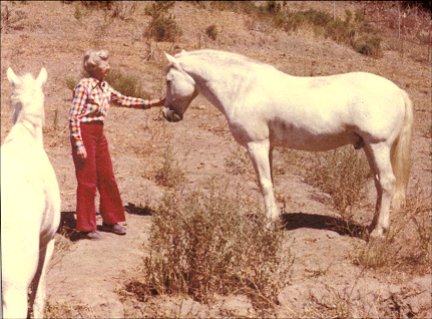 Paddy [Photograph courtesy of Joan McKenna] For more information on the American Connemara Pony Society, click here.
Want to read more articles by
< to previous article
to next article >
Questions or comments?
| Forum
| Store
| Publications
| BookLinks
| BookSearch
| BookTopics
| Archives
| Advertise
| AboutUs
| ContactUs
| Search Site
| Site Map
| Google Site Map
Store - Specials
| BookHunt
| BookShelf
| Gold Edition & BookThink's Quarterly Market Report
| DomainsForSale
| BookThinker newsletter - free
Copyright 2003-2011 by BookThink LLC
|

|
|